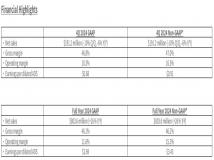最近正在研究学生机房虚拟化的解决方案,选用的是Ubuntu 10.10 Mini版本的操作系统,一切都是从头开始安装的,所以比较清楚自己安装了些什么。GUI我只是安装了一个简陋的Wmaker。只是,有一个问题产生了,启动的时候总是到字符界面等待用户输入用户名和密码
最近正在研究学生机房虚拟化的解决方案,选用的是Ubuntu 10.10 Mini版本的操作系统,一切都是从头开始安装的,所以比较清楚自己安装了些什么。GUI我只是安装了一个简陋的Wmaker。只是,有一个问题产生了,启动的时候总是到字符界面等待用户输入用户名和密码。这个问题让我郁闷了很久!不过,在今天终于解决了,是通过接下来这个文档成功的解决了。不用输入用户名密码,直接登录到指定用户的图形界面。是不是很酷呢!一旦你感兴趣的话,可以看看接下来的内容,之所以没有翻译,是因为本人认为E文是不可避免的。
Ubuntu makes it easy to enable automatic login if you’re using a login manager such as GDM. I was recently setting up a minimal Ubuntu 9.10 system with an LXDE desktop and no GDM. Here’s how I enabled automatic login.
Note: This was tested on Ubuntu 9.10. Previous versions of Ubuntu require different procedures because of changes to the way Ubuntu boots.
Open /etc/init/tty1.conf as root:
sudo nano /etc/init/tty1.conf
Change the last line of this file to (where USERNAME is the username of the user you want to log in):
exec /bin/login -f USERNAME < /dev/tty1 > /dev/tty1 2>&1
Reboot, and the user you chose should be logged in automatically after boot. If something goes wrong, you can switch to a different TTY with CTRL+ALT+F2 and log in normally.
If you want this user to be logged into a graphical environment instead of just a shell, there’s more work to be done. Open your user’s .bashrc file:
nano ~/.bashrc
Add the following to the end of the file:
if [ $(tty) == "/dev/tty1" ]; then
startx
fi
This code will start X (the graphical environment) whenever the user logs in on TTY1. You can add more code after startx that will be executed if the user logs out of X.
声明: 此文观点不代表本站立场;转载须要保留原文链接;版权疑问请联系我们。










